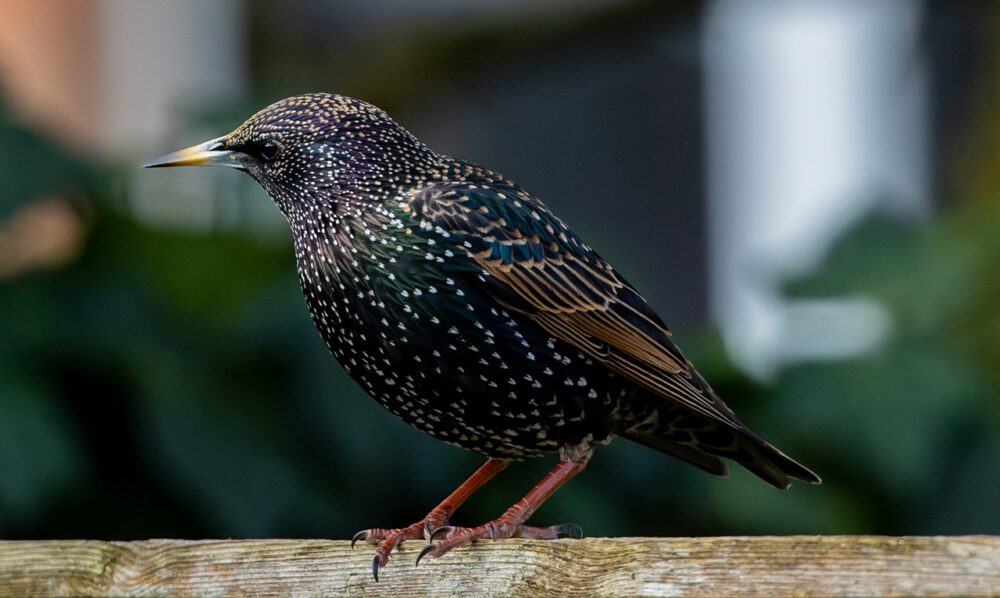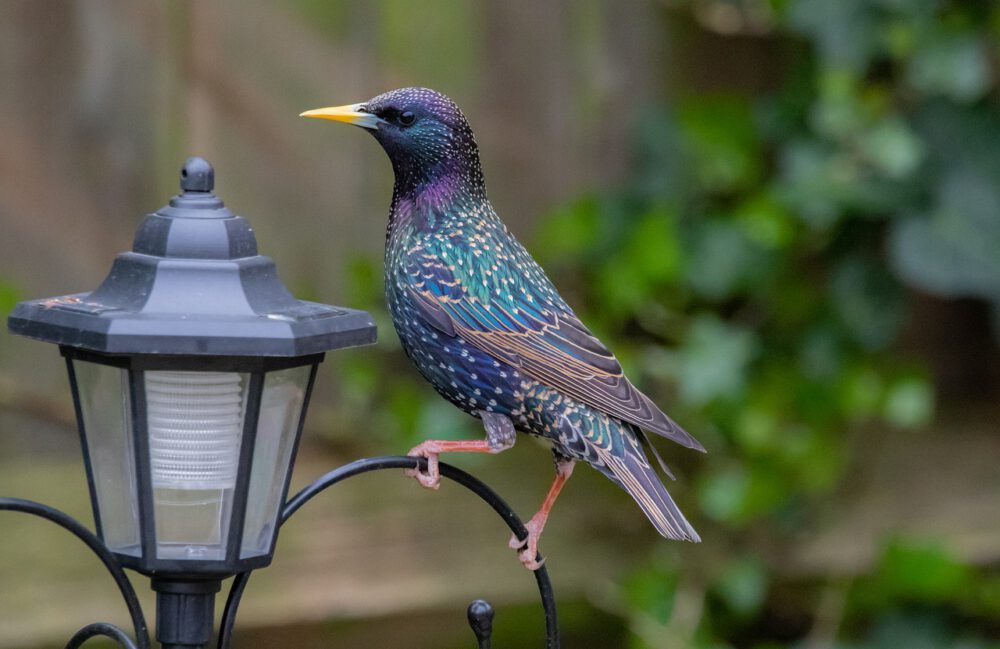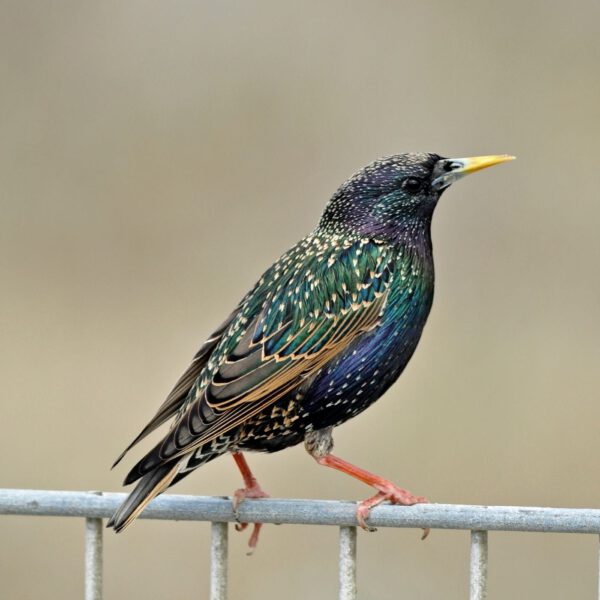All About the Starlings
Bold, beautiful, and invasive, over two hundred million starlings soar the skies of our continent. Starlings are known for their stunning flight displays and crafty behavior.
First introduced in 1980, starlings were one of many birds found in Shakespeare’s literature to be released into the public. And although well-intended, starlings have posed a challenge and threat to competing species ever since.
These pesky birds negatively impact human lives, as well. Flocks of starling are responsible for massive crop consumption and destruction of property.
Starlings are despised by many, but they never fail to amaze and impress.
Here, on this Wildlife ID page from Covenant Wildlife Removal, you will discover both necessary and exciting facts about the starling.
Read on to learn what makes this bird so incredible.

Facts About Starlings
Appearance
Starling’s tails are short and square, and their legs are small and pink. They are small to medium-sized birds, only slightly larger than a robin. Other physical appearances of the starling change seasonally.
Warmer Months
The starling’s feathers are black with iridescent green and purple. You will often miss the sheen of purple and green at a distance, as the starling appears solid black. Both sexes have yellow bills but, the base of the bill is blue for males and pink for females.
Cooler Months
Starlings trade their bright colors for dull hues when the weather changes. In the winter, the bird is identified by its black feathers with white spots.
Behavior
Flight and Flocks
The flight of the starling is quick and controlled. While some starlings will never migrate, others travel great distances, even overseas. Whether they migrate or not depends on where they are. For example, scientists observe the most starling migration in the Midwest and Great Lakes region.
Starlings are most effective in groups or flocks. Flocks are best known for their massive “dances,” appearing as one giant object, moving like water through the sky. Unfortunately, the wiping out of crop fields or other invasive behavior follows the mesmerizing sight.
Starlings are better in numbers.
Thousands of birds can make up one flock, soaring through the sky as one body. The flock will swoop and swirl in stunning displays to avoid large predators. These murmurations occur during the evenings of the starling’s winter migration months. Not only does the survival skill provide safety, but it acts as an information and warmth exchange amongst the flock.
Invasive Species
Starlings are invasive species in The United States and threaten the survival of many native bird populations. As mentioned before, the individuals who introduced the starling were not scientists but Shakespeare enthusiasts and never anticipated its harmful effects.
But, a Certified Environmental Professional, who has worked in environmental protection since 1979, offers the following advice:
You should never allow a starling to use a nest box, as they will aggressively evict other native birds and may attack their eggs and young.”
It is essential to be aware of the starling’s aggressive and territorial behavior.
Mating and Parenting
Despite their reputation as a challenging pest, starlings have quite admirable relationship values. The starling is typically a monogamous bird, meaning it will mate with only one individual throughout its lifetime.
After mating, both parents will take on the responsibility of caring for their young until they fly the nest. The female will likely do most of the work, but both parents spend time incubating the eggs. Once the eggs have hatched, both mother and father dedicate their days searching for food and feeding hatchlings.
Diet
The starling’s diet will change with the season. In summer and fall, seeds and berries make up most of their nutrients, while in the winter, starlings consume more protein for the breeding season. Higher protein meals are typically insects and other invertebrates.
Some of the starlings’ favorite foods are:
- Strawberries
- Tomatoes
- Grains
- Worms and grubs
Starlings will feed in large flocks, quickly and effectively. This often leads to the destruction of crop fields or the depleting of another bird’s food source.

What To Do If You Have a Starling Problem
Spotting starlings soaring above an agricultural field or feeding from birdhouses in your garden must be addressed immediately and effectively. They can cause even further damage to surfaces with their corrosive droppings.
Super adaptive and intelligent, starlings can be a significant nuisance on your property and threaten surrounding wildlife. If you spot starlings on your property, you can start by removing all bird feeders and clearing the area of any bird food that may have collected on the ground.
Then contact the experts at Covenant Wildlife Removal.
Every day we remove nests, pests, and critters of all sorts from Georgia homes. There is just about nothing we have not seen or removed.
Click here for a free inspection with our expert team of wildlife removal specialists. Covenant Wildlife Removal will be there right away for all your pest removal needs.
Covenant Wildlife Removal is a top-rated local family-owned, full-service wildlife trapping, removal, and repair service.
